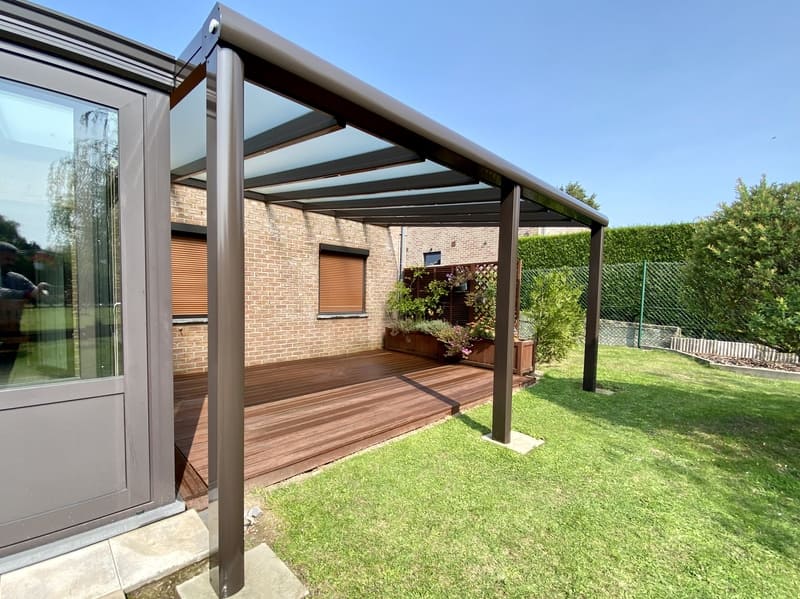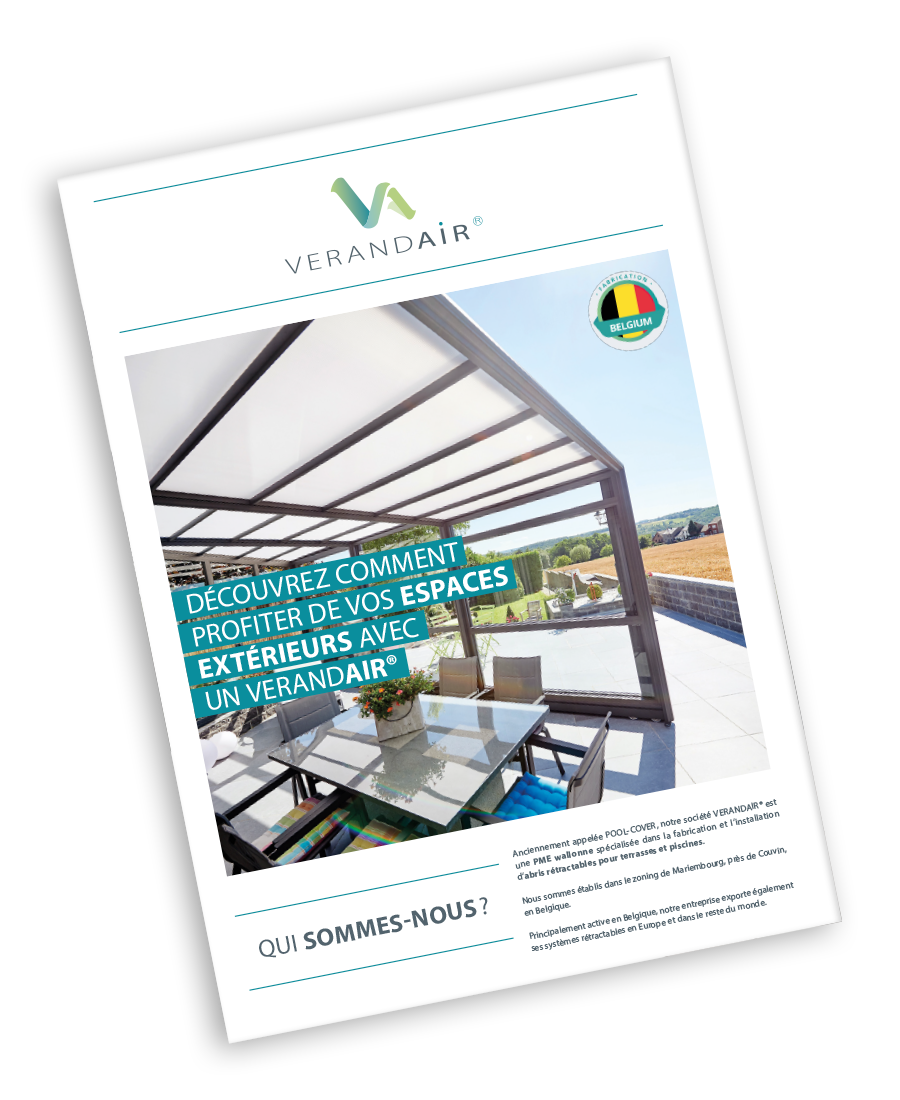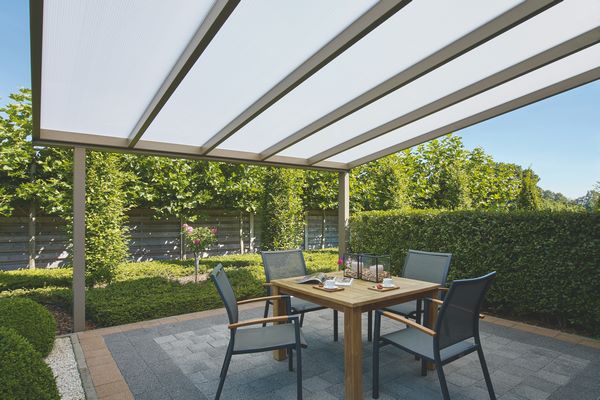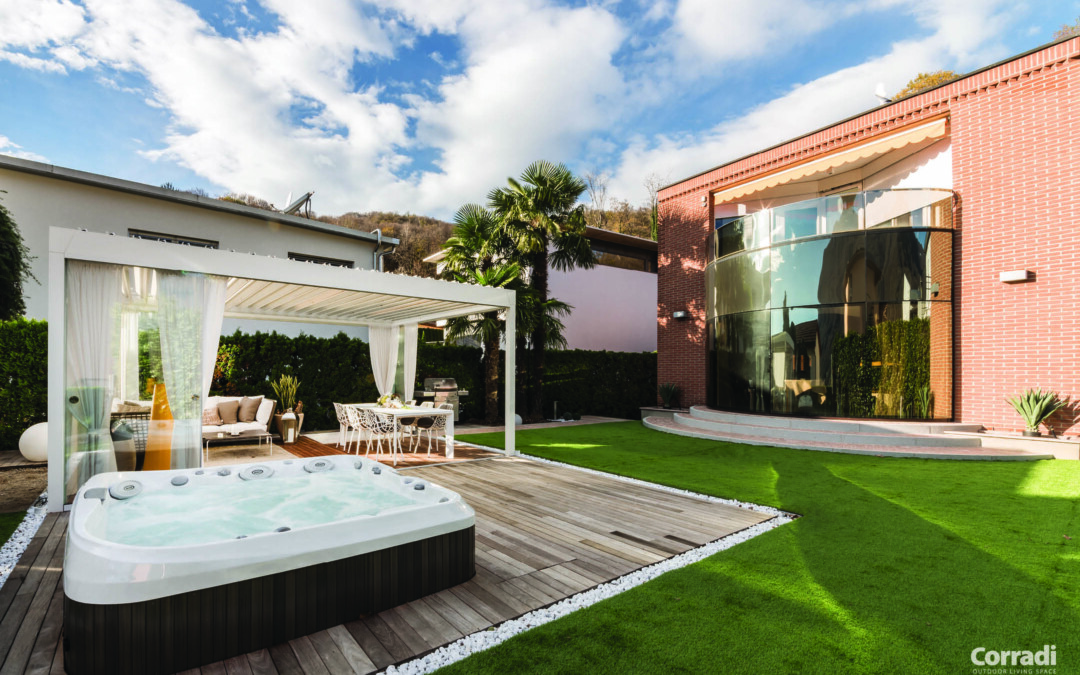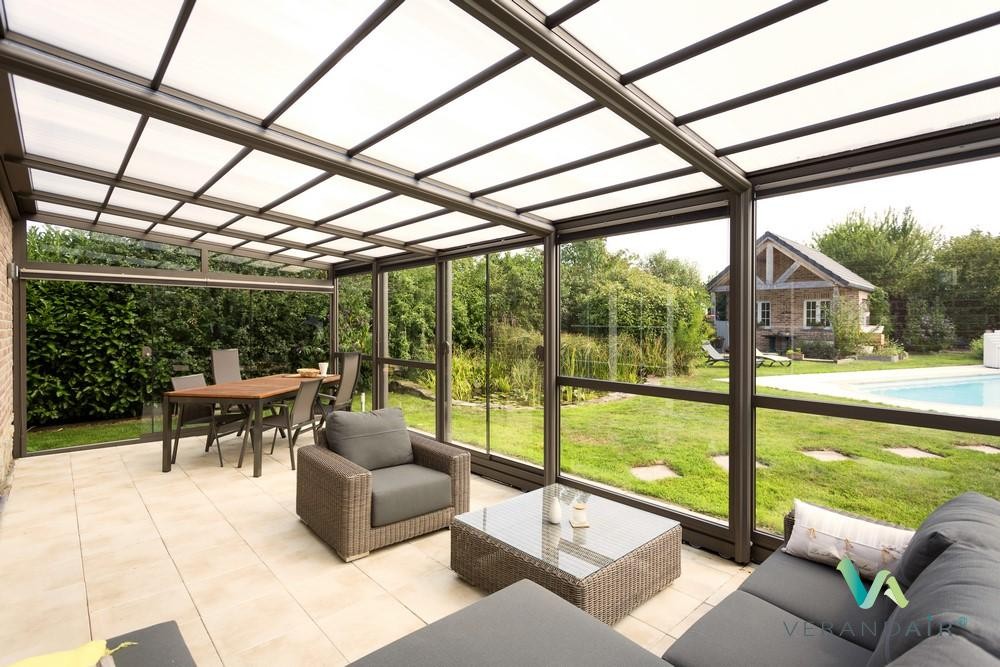Looking to spruce up your exterior? There are many options to choose from: arbors, canopies, gazebos, patios… Have you considered a pergola? Less expensive than a veranda, they are custom-built, often in wood or aluminum, and allow you to install a shelter in your garden or on your terrace to make the most of the fine weather. There are two types: freestanding and lean-to. Find out what we think of these two types of structure.
The free-standing pergola
Resting on four posts that support the roof, the pergola does not need to be wall-mounted. It can therefore be installed anywhere on your property.
It can be used as a shelter where you need shade in summer. It will look particularly attractive in a large plot or near a swimming pool.
This installation can be produced in many different materials and sizes. You can choose between an aluminum, wood or PVC pergola, depending on your tastes and the size of your plot.
The roof of your pergola can be straight or sloped, depending on the look you’re going for. It can be made of glass, polycarbonate or wood. If it’s a bioclimatic pergola, its roof will be made up of opaque, adjustable slats.
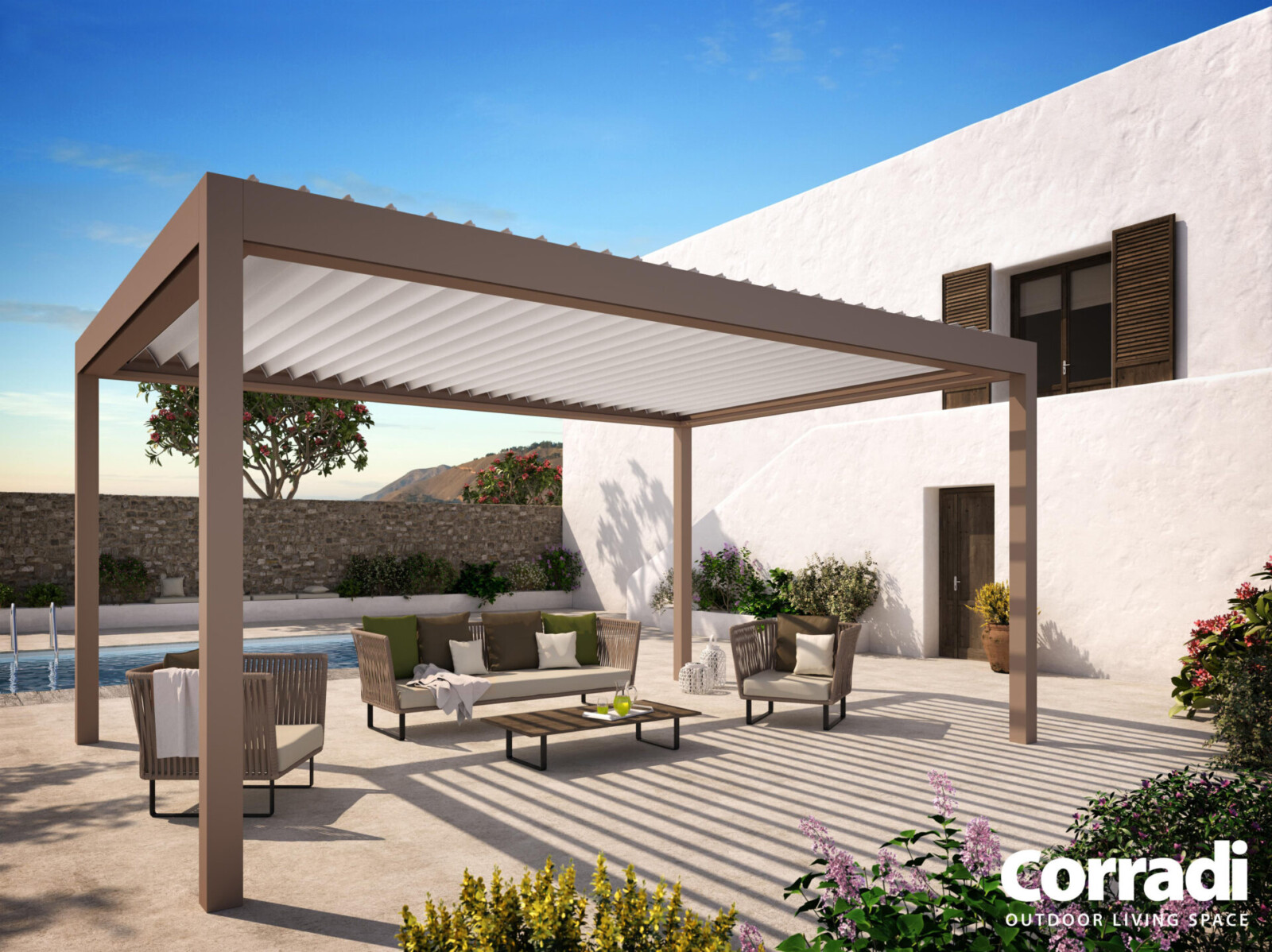
The advantages of freestanding pergolas
- This type of pergola needs no walls for support. So it can be installed wherever you like on your property.
- It’s a highly aesthetic installation that will add value to your home.
- It creates a shady terrace, a little away from your home, for relaxing in your garden.
- It can be moved.
Disadvantages of freestanding pergolas
- The price is a little higher.
- It will be more difficult to install on smaller lots. In fact, it requires a little more space.
- It requires a foundation for stability, which can be more costly and difficult to install than a wall-mounted pergola.
- This structure can be a little fragile in windy regions. It all depends on where you live in Belgium.
- Regular maintenance is essential to keep it in good condition.
The lean-to pergola
This system must be fixed to one of the walls of your home. Itbrings shade to the house on the hottest days and creates a real extra room in your home during the summer months.
Like the freestanding pergola, it comes in many different styles and materials. You can choose between aluminum, wood, PVC or wrought-iron structures, depending on the style of your home. Its roof can be pitched to follow the curve of your home’s roof, or straight for aesthetic reasons. This choice is also influenced by the orientation of the sun and the desired shade.
The advantages of lean-to pergolas
- A lower price
- It can be installed quickly and easily using mounting brackets that attach directly to an existing wall.
- It takes up less space than a freestanding pergola, as it needs no foundation. It can therefore be used on a small plot of land.
- It’s more stable than a freestanding pergola, because it’s attached to an existing wall.
- It can be used to cover an existing terrace or outdoor area, without having to build a house extension.
- It allows you to enjoy an extra room on sunny days, like a summer kitchen.
The disadvantages of lean-to pergolas
- To attach it, you’ll need at least one unobstructed façade to place the wall fixings.
- Installation work will be a little more extensive and time-consuming than for a pergola pergola.
- It can cause damage to the wall on which it is mounted if not installed correctly.
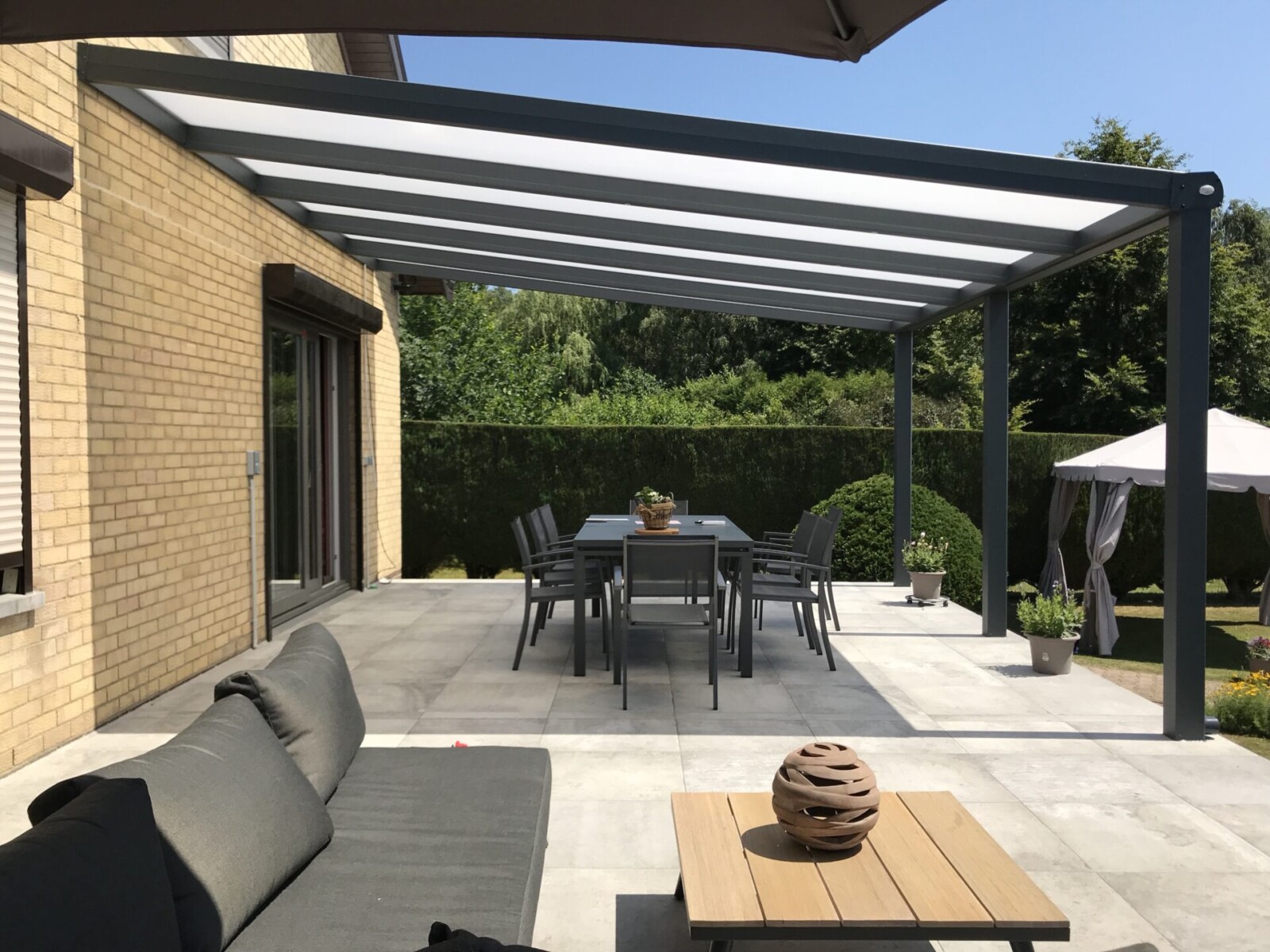
Installing a lean-to pergola
To fix a wall-mounted pergola, first prepare the mounting brackets. These brackets can be made of wood or metal, and must be securely fastened to the wall.
The pergola posts are then attached to the mounting brackets. Finally, the pergola beams are attached to the posts to complete the installation. It’s important to check that the posts are properly aligned and securely fastened to the mounting brackets. Note that it’sbest to call in a professional to install your pergola, as you risk damaging your wall.
Freestanding or lean-to pergola: what criteria should you consider?
When choosing how to mount your pergola, certain criteria are essential. We have selected the most important ones for you:
Your needs
What are your expectations? If you’re looking for extra living space in summer without having to go too far from home, the wall-mounted pergola is the best product. You can also choose this type of pergola to connect your home to a swimming pool , for example.
On the other hand, if you’d rather create a relaxing space in the middle of your garden, the freestanding pergola is the model to recommend. The roof also provides protection from the sun and rain, even when you’re far from home.
By adding a sliding glass wall, you’ll be fully protected from the elements.
Your budget
The price of installing a pergola will depend in part on the type. Generally speaking, a lean-to pergola will cost a little less than a free-standing one. But prices will also depend on the materials chosen for the pergola’s posts and roof. In general, aluminum is more expensive than PVC or wood, but it’s a much higher-quality product. The options chosen and the materials used also influence the price. For example,
- the roof can be made of polycarbonate panels or fitted with adjustable slats(bioclimatic), … ;
- the underroof can be covered with a barnum ;
- panels, canvas, bay windows or blinds can be added as protective walls;
- you can add accessories such as LED lights, heaters, speakers, etc.
The nature of your land
Depending on the size and nature of your plot, a particular type of pergola will be more appropriate. If you have a large, flat plot of land, you can choose to install any pergola you like. On the other hand, if your plot is small and sloping, a lean-to pergola is the most recommended installation.
And if you want to close your pergola?
Whether wall-mounted or freestanding, bioclimatic or not, the pergola is an evolutionary product. Less expensive than a retractable veranda, you can add a wall when you have the budget and the desire. There are several options for creating a closure:
- a lightweight fabric that acts as a windbreaker;
- an awning, slightly more resistant than canvas, which you can unroll to create the desired amount of shade;
- a sliding glass wall that can be opened at will, letting in sun light and creating a sort of warm winter garden.
Learn more about pergola enclosure options: 3 practical solutions for enclosing a pergola.
